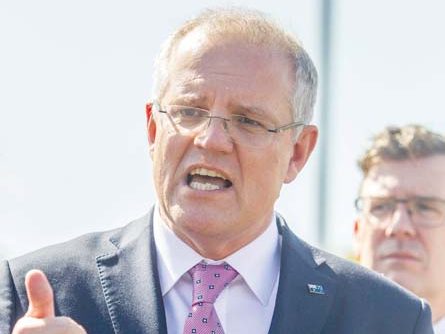
A BUSINESS case assessing the proposed electrification of the Frankston line to Baxter has suggested that a different option be taken instead.
The business case was finally publicly released last week, more than a year after it was handed to the federal government. It assesses five options to improve local public transportation.
One option assessed in the business case only provides improvements to bus services. Two would see no electrification works undertaken and add passing loops to the Stony Point line, and the final two would see the track duplified and electrified to Langwarrin and Baxter respectively.
The study identifies the “Stony Point Uplift” as the “indicative preferred option”, rather than the long-planned electrification and duplication to Baxter.
The Stony Point Uplift would see passing loops added along the Stony Point line at Tyabb and Bittern – to allow trains travelling in opposite directions to pass each other. The track would not be electrified, and the project would not include level crossing removals.
The estimated cost of electrifying the Frankston line to Baxter was listed at between $1.3 and 1.5 billion in the business case. The cost of completing the project to Langwarrin was estimated to cost between $900 million and $1.1 billion.
The Baxter electrification project would see the construction of new stations at Frankston East, Langwarrin, and Baxter. Additional costs for the project come from five level crossing removals, an additional rail bridge over Peninsula Link, stabling roads at Baxter, and residential property acquisition.
As it stands the federal government has committed $225 million to the electrification project, and the state government has not made any commitment at all. This leaves the proposed project with a massive funding shortfall.
State Frankston MP Paul Edbrooke was contacted by The Times for comment, but did not respond before deadline.
The federal government’s contribution would cover the estimated cost of the Stony Point uplift proposal if its funds were diverted towards it. The indicative preferred option is projected to cost between $190 million and $210 million.
The case read that “none of the investment options have demonstrated a strong economic case for priority investment”, but identified the Stony Point Uplift as the preferred option as it “requires significantly less capital investment and has less impacts than the electrification options”.
The business case does identify that it is a problem that “limited public transport options and poor connections between the Peninsula, Frankston and the city results in increased car dependency”
“Less than three percent of residents use public transport in the Mornington Peninsula, and less than six percent in Frankston, which is exceedingly low when benchmarked against municipalities with similar characteristics. The low proportion of commuters using public transport is indicative of several issues in the area, including accessibility, reliability and poor travel times. For residents in Frankston and the Peninsula, less than 10 per cent of all jobs are accessible by public transport within an hour,” the business case read.
Ginevra Hosking, CEO of advocacy group Committee for Greater Frankston called the finding of the business case “Orwellian”.
“The Victorian government was given $1.5 million of public money to create this report, which purports to be a rapid cost-benefit study but it clearly states that actually quantifying the project benefits was out of scope. The Frankston and wider community were expecting their state government to extend the train line to at least Langwarrin with a minimum 15-minute metro service and a dedicated commuter park and ride for at least 1000 cars,” she said.
“The state government’s indicative preferred option doesn’t even include a local station for the people of Frankston South, Karingal and Langwarrin, effectively bypassing 37,000 Frankston City residents. (…) Taxpayer money paid for this rail extension study. We deserve a full explanation about why this project, so vital to our region, has been stopped dead in its tracks.
“It’s time for the state government to start properly planning to construct this vital public transport project.”
Federal Flinders MP Greg Hunt, whose electorate encompasses Baxter, said “when it comes to extending Metro train service beyond Frankston, the Committee for Greater Frankston agree, the Committee for the Mornington Peninsula agree, the Mornington Peninsula Shire agree, Frankston City Council agree, the Victorian Opposition agree and the Federal Liberal and Labor Parties agree of the merits of this expansion.”
Dunkley MP Peta Murphy said “it took more than a year of relentless advocacy from me, including a meeting with the Deputy Prime Minister, to push the federal government to finally release the business case.”
“The Morrison government promised our community they were building the Metro Rail to Baxter. Yet nothing has happened. My unwavering commitment is to better public transport, including improved train services, for our community. As our local federal member, I will keep up the pressure for the Morrison government to deliver on its promises.”
The business case reads that approximately 7.4 hectares of land acquisition would be required at Baxter if the line was electrified to it. Property acquisitions may also have to occur for level crossing removals at Moorooduc Highway, Hillcrest Road and Golf Links Road.
The different options for improving the Frankston railway line were suggested to be further assessed in a detailed business case.
First published in the Frankston Times – 17 November 2020
